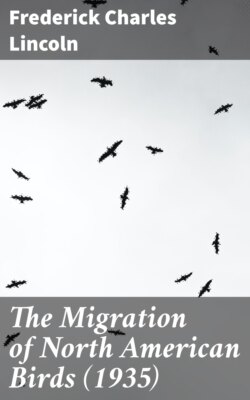Читать книгу The Migration of North American Birds (1935) - Frederick Charles Lincoln - Страница 9
На сайте Литреса книга снята с продажи.
SOUTHERN ANCESTRAL HOME THEORY
ОглавлениеThe opposing theory is simpler in some respects and supposes that the ancestral home of all birds was in the Tropics and that as all bird life tends to overpopulation there was a constant effort to seek breeding grounds where competition would be less keen. Species that strove for more northern latitudes would be kept in check by the ice and forced to return southward with the recurrence of winter conditions. As the ice retreated, vast areas of virgin country became successively suitable for summer occupancy, but the winter habitat remained the home to which the birds returned after the nesting season. It is a fact that some species spend very little time on their breeding grounds; the orchard oriole (Icterus spurius), for example, spends only 2½ months in its summer home, arriving in southern Pennsylvania about the first week in May and leaving by the middle of July.
Both theories assume that migration is an ingrained habit, but neither is supported by positive biological data. Both have been criticized also on geological grounds, and neither can be accepted without qualification. It is apparent, however, that whether the ancestral home of any species was at the northern or at the southern limits of its present range, or even in some intermediate region, the search for conditions favorable for breeding in summer and for feeding in winter has been a principal factor underlying the origin of migration.
